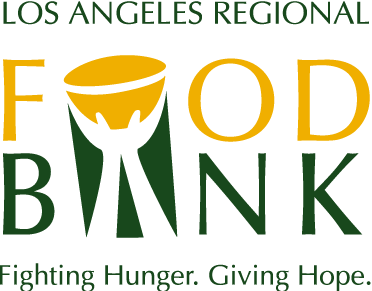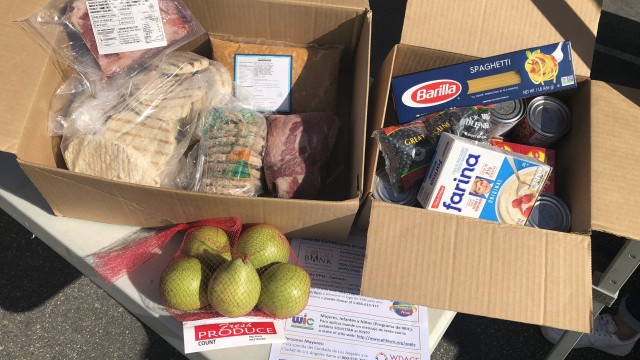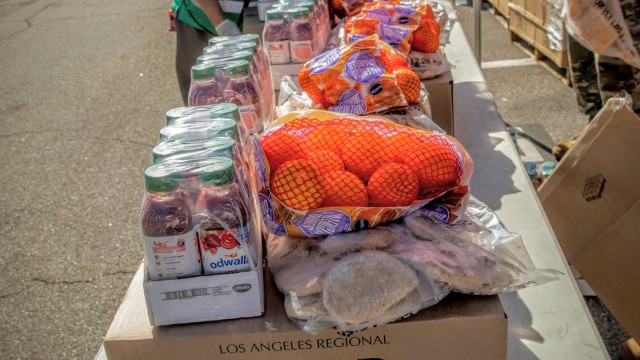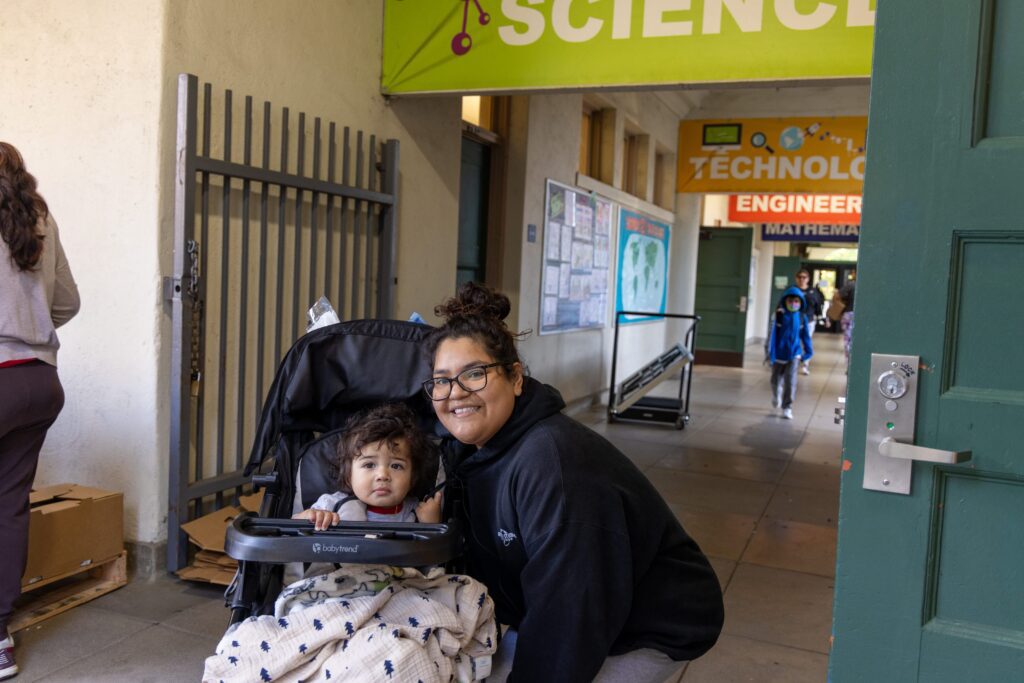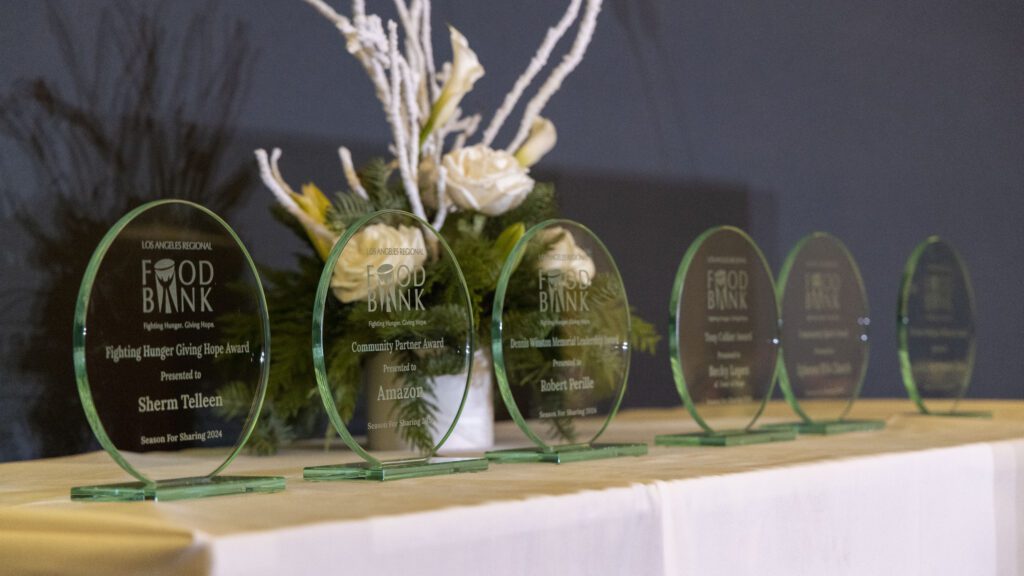Unboxing the LA Regional Food Bank Box
Unboxing the LA Regional Food Bank Box
*This post was published on July 6, and the stats were updated on August 7, 2020 – for the latest details and stats, visit our COVID-19 page >
The LA Regional Food Bank’s two distribution centers in South Los Angeles and Commerce are operating with no substantial constraints – except for following LA County Department of Public Health guidelines, including social distancing.
Food distribution has increased by 80% since mid-March through early August 2020. The Food Bank has distributed 44 million pounds of food, the equivalent of 36 million meals – including 805,000 emergency food boxes distributed to families and individuals (2.4 million individuals* served in total) through our network of over 600 partner agencies, the Food Bank’s Mobile Food Pantry and direct distributions.
Have you ever wondered what goes into the Food Box? We’ve broken down what to expect when picking up an emergency food kit that many of our neighbors have recently sought out – some times for the first time given the new economic hardship the pandemic has caused for so many.
At one of the more substantial drive-through distributions, Food Bank President and CEO Michael Flood opens a freezer box or kit and fresh produce in this video. He walks us through the 25-pound box filled with chicken drumsticks, chicken patties, and filet portions of Alaska Pollock.
The box is a good amount of protein for a family for a week and the idea is to add in fresh produce and shelf-stable items to help families in the coming weeks.
Within each box includes some information, so people are aware of the resources that are available to them. We have a lot of people who are brand new to seeking food assistance and they may not be aware of other programs that can assist them. We have information about the CalFresh Program (the traditional Food Stamp Program) and how to apply for it online or by calling their call center. We also have information on WIC (Women, Infants and Children Program). There’s information on the Senior/Older Adults Meals Program and 211 LA County, a critical resource not just about food assistance but also for other resources. You will also find information about our Food Pantry locator, where people can learn where there are food resources in their local communities.
The Food Bank’s Director of Operations Scott Newton takes you inside our emergency food kit, where you will typically find a mix of healthy food (fresh produce, protein, rice, soups, beans, and trail mix – enough to feed an entire family of four for a whole week), as seen in this video.
The Food Bank continues to mobilize resources to fight hunger in our community, reaching even more people in need during the pandemic. We aim to educate and inform those we serve about the importance of healthy diet and lifestyle choices. We focus on distributing nutritious food: nearly 20% of what we distribute is fresh produce and 84% of what is distributed is rated as nutritious. The Food Bank offers nutrition education classes that take place during and after our After School Meals Program, when in session. Nutritious handouts are included for our BackPack Program. Many of our agencies provide recipes and other nutrition-related resources for clients.
To learn more about the Programs and Services at the Food Bank, be sure to visit our programs page.
*This post was published on July 6, and the stats were updated on August 7, 2020 – for the latest details and stats, visit our COVID-19 page >

